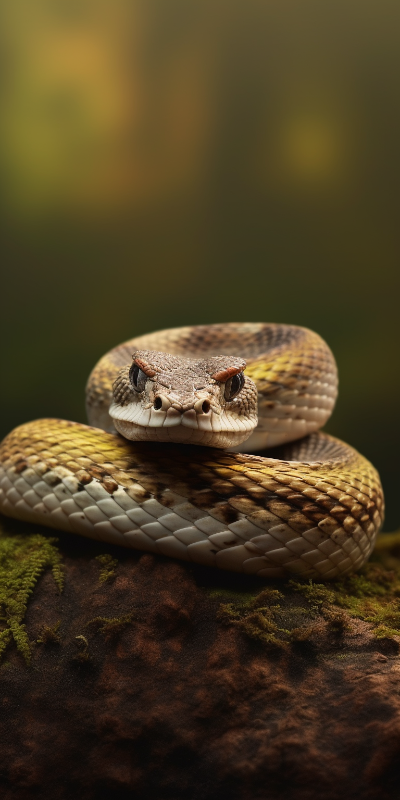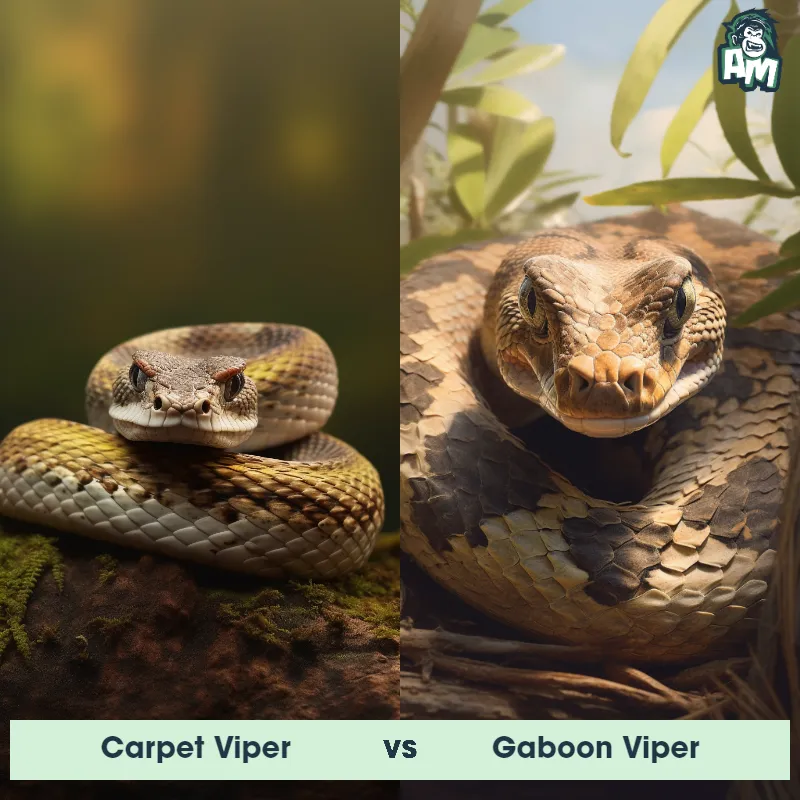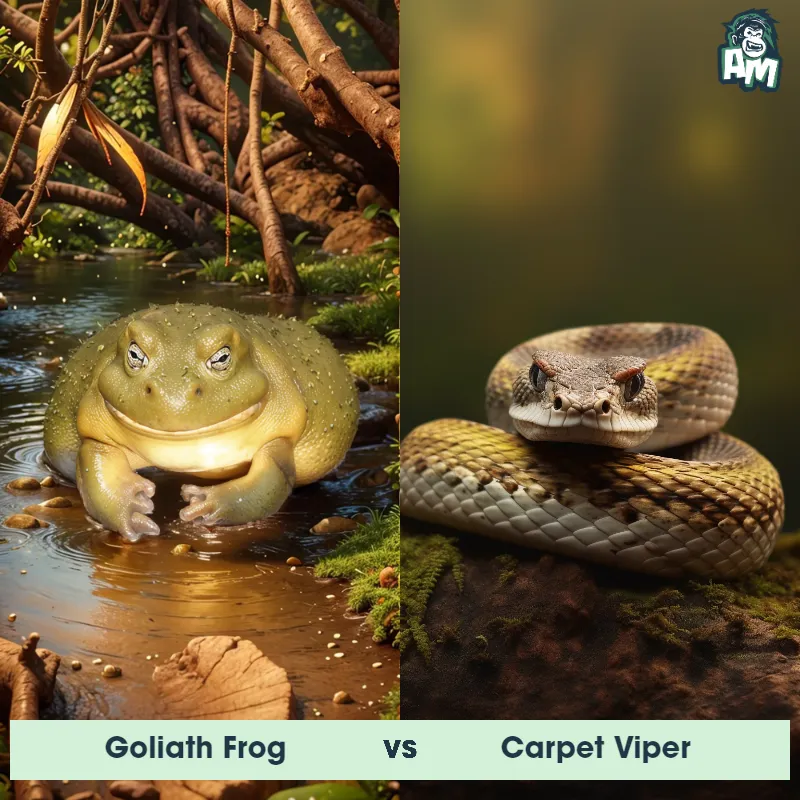The Carpet Viper
The Carpet Viper, also known as the Echis carinatus, is a venomous snake species found in the arid regions of Africa, the Middle East, and some parts of Asia. These vipers are known for their distinctive patterning, which resembles a carpet or rug, hence their common name. They have a slender body, ranging in length from 50 to 80 centimeters, and their coloration can vary from shades of brown to gray, with a series of dark, diamond-shaped markings down their back. Carpet Vipers possess long, hinged fangs that they use to inject their potent venom into their prey, which primarily consists of small rodents and lizards.

| Carpet Viper | |
|---|---|
| Size | Up to 2 feet (0.6 meters) |
| Weight | Up to 1.5 pounds (0.7 kilograms) |
| Speed | Speed: 12 mph (19.31 km/hr) |
| Key Strength | Venomous bite |
| Biggest Weakness | Small size and slow movement |
| Scientific Name | Echis carinatus |
| Family | Viperidae |
| Habitat | Desert and semi-arid regions |
| Geography | Middle East and Africa |
| Diet | Small mammals, birds, and lizards |
| Lifespan | 10 years - 20 years |

The Carpet Viper
The Carpet Viper, also known as the Echis carinatus, is a venomous snake species found in the arid regions of Africa, the Middle East, and some parts of Asia. These vipers are known for their distinctive patterning, which resembles a carpet or rug, hence their common name. They have a slender body, ranging in length from 50 to 80 centimeters, and their coloration can vary from shades of brown to gray, with a series of dark, diamond-shaped markings down their back. Carpet Vipers possess long, hinged fangs that they use to inject their potent venom into their prey, which primarily consists of small rodents and lizards.
Fun Fact: Carpet Vipers have the ability to control the flow of venom when they bite, allowing them to deliver either a dry bite without venom or an envenomated bite, depending on their intention or circumstances, which increases their chances of survival when attacking larger animals.
| Carpet Viper | |
|---|---|
| Size | Up to 2 feet (0.6 meters) |
| Weight | Up to 1.5 pounds (0.7 kilograms) |
| Speed | Speed: 12 mph (19.31 km/hr) |
| Key Strength | Venomous bite |
| Biggest Weakness | Small size and slow movement |
| Scientific Name | Echis carinatus |
| Family | Viperidae |
| Habitat | Desert and semi-arid regions |
| Geography | Middle East and Africa |
| Diet | Small mammals, birds, and lizards |
| Lifespan | 10 years - 20 years |
Carpet Viper Matchups
We use AI to simulate matchups between the Carpet Viper and other animals. Our simulation considers size, strength, and natural predatory behaviors to determine the most likely outcome.

Can't find the Matchup you want?
Create Your Own MatchupCarpet Viper: Diet, Predators, Aggression, and Defensive Behaviors
What do Carpet Vipers eat?
Carpet Vipers primarily feed on small mammals such as rodents, birds, and lizards. They are venomous snakes, so they use their venom to immobilize their prey before consuming it.
Do Carpet Vipers have any predators?
Yes, Carpet Vipers do have predators in the wild. Predators of Carpet Vipers can include various birds of prey, mongooses, and other snakes. However, their cryptic coloration and nocturnal behavior help them avoid detection by predators.
Are Carpet Vipers aggressive?
Carpet Vipers are generally not considered to be aggressive snakes. They will usually only strike if they feel threatened or cornered. Their first line of defense is to stay camouflaged and avoid conflict.
Do Carpet Vipers fight?
Carpet Vipers are solitary animals and are not known to engage in fights with other snakes or animals. They typically prefer to avoid confrontation and will only strike if they feel endangered.
How do Carpet Vipers defend themselves?
Carpet Vipers have several defense mechanisms to protect themselves from predators. Their cryptic coloration allows them to blend into their environment and avoid detection. If they feel threatened, they will hiss and strike as a warning. Their venomous bite is their most potent defense, capable of immobilizing or killing potential threats.
What is the Carpet Viper's biggest weakness in a fight?
The biggest weakness of Carpet Vipers in a fight is their relatively small size compared to some of their predators. Larger predators, such as birds of prey or mongooses, could potentially overpower a Carpet Viper in a physical confrontation. However, their venomous bite is still a significant threat, especially when utilized in self-defense.
Fun Fact: Despite their venomous nature, Carpet Vipers have a relatively docile and non-aggressive temperament, preferring to rely on their camouflage abilities to escape from threatening situations rather than engaging in confrontation.
Fun Fact: Carpet Vipers have a unique "sand-swimming" behavior, where they can bury themselves in loose sand or soil by pushing their body forward using a side-to-side motion. This action allows them to disappear under the surface and avoid detection from predators or potential threats.












